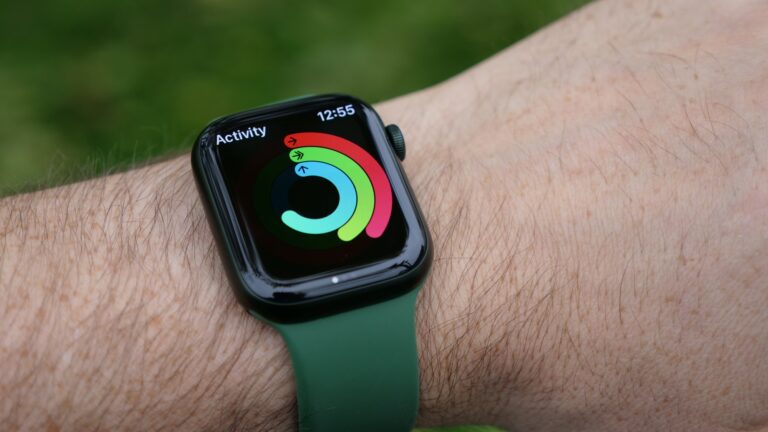How to Measure Steps and Reach Your Fitness Goals?
Are you striving to lead a healthy lifestyle? Whether to lose weight, maintain fitness or simply for a healthy cardiovascular system, walking is a great exercise that comes with numerous health benefits.
However, it’s difficult to track your progress without an effective method to measure your steps in a mile. Fortunately, wearable technologies have made it easy to track every step you take. If you’re not already using an activity tracker or a pedometer, don’t worry. In this guide, we’ll discuss how to measure steps effectively to help you reach your fitness goals.
Use an Activity Tracker
The best and most effective way to track your steps is through an activity tracker. There are numerous brands available in the market, and most wearables have built-in pedometers that count your steps in a mile. The advanced ones come with GPS and heart monitoring sensors to give an accurate representation of your fitness level.
Use Your Smartphone
If you don’t want to use an activity tracker, your smartphone can also track your steps. Smartphones have built-in sensors that can track your walking distance, time, pace and calculate the number of steps taken. Numerous apps are available on app stores that claim to track your steps; however, not all are accurate. Be sure to choose a reputable app and take your phone with you, always.
Use A Pedometer
A pedometer is a device that clips to your waistband and tracks the motion of your hip, converting it into steps. As with an activity tracker or smartphone, a pedometer tracks the number of steps you take. However, they might not offer other data such as distance, height or heart rate, which could be vital.
Measure Your Stride Length
Stride length is the length of one complete step when walking or running. The distance between your heel of one foot to the heel of your other foot when you walk is your stride length. The longer the stride length, the fewer the steps needed to cover a mile.
To measure your stride length, walk at your normal pace and measure the distance from one heel to the next. Divide the distance by the number of steps in a mile taken to calculate the length of one stride.
Know Your Daily Goal
Knowing your daily step goal can help you track your progress and stay motivated. In the US, a healthy range is between 7,000-10,000 steps daily. However, it’s essential to remember that each person’s requirements are different, based on their fitness level and age. Set your daily goal and keep track of your progress each day to stay motivated to achieve your wellness ambitions.
Understanding Your Current Fitness Level – Establish baseline metrics for your current fitness level such as body weight, BMI and waist circumference to measure your progress later.
Choosing the Right Fitness Tracker
- The number of steps in a mile can vary depending on a person’s stride length. Typically, the average number of steps in a mile is around 2,000 to 2,500 steps. However, this can vary based on a person’s height, weight, and other factors.
- If you want to adjust the number of steps in a mile, you can do so by changing your stride length in your fitness tracker’s settings. To determine your stride length, measure the distance between your heel strikes on two consecutive steps while walking normally. Then, divide that distance by two to get your average stride length.
- Once you have your stride length, you can adjust the number of steps in a mile in your fitness tracker’s settings. This will help ensure that your tracker accurately counts your steps and calculates your distance traveled.
Factors to consider
There are several factors to consider. Here are some key things to keep in mind:
- Different fitness trackers come with different features, such as heart rate monitoring, GPS tracking, sleep tracking, and more. Consider which features are most important to you and choose a tracker that offers them.
- Make sure the fitness tracker you choose is compatible with your smartphone and any other devices you want to connect it to. Some fitness trackers are only compatible with certain operating systems or devices.
- Fitness trackers come in a variety of designs, from slim and discreet to larger and more robust. Consider which design will be most comfortable for you to wear throughout the day.
- Check the battery life of the fitness tracker you’re considering. Some trackers require daily charging, while others can last for several days or even weeks on a single charge.
- Fitness trackers can range in price from under $50 to several hundred dollars. Set a budget and choose a tracker that fits within your price range.
Conclusion
Regular walking is beneficial to your physical and mental health. However, the staggering number of steps taken each day can be difficult to track. Luckily, advancements in technology offer convenient, efficient solutions to track your footsteps.
Whether through an activity tracker, a pedometer or by using your smartphone, there are various ways to measure your steps accurately. Whatever method you choose, it’s important to set achievable daily goals, track your progress and celebrate your accomplishments to stay motivated to accomplish your health goals.







